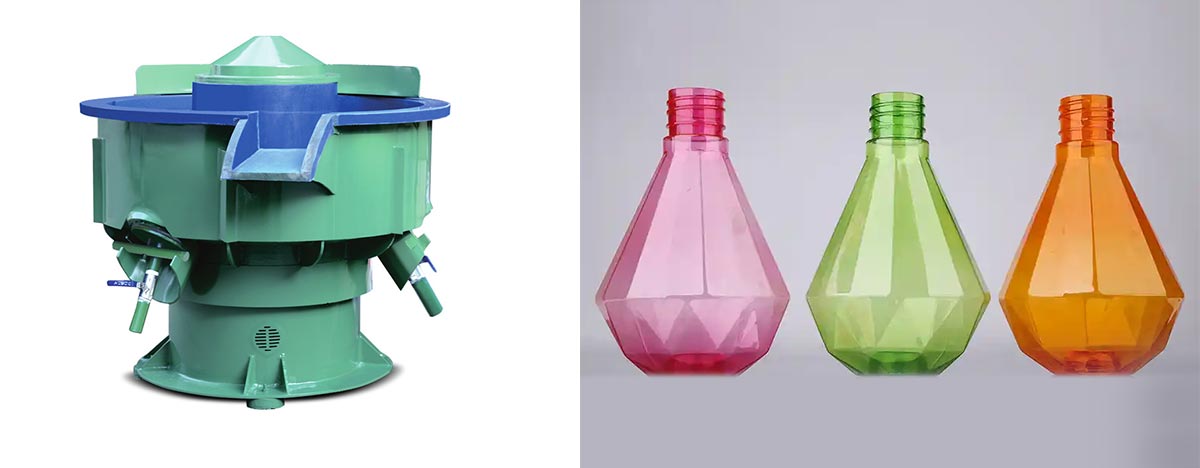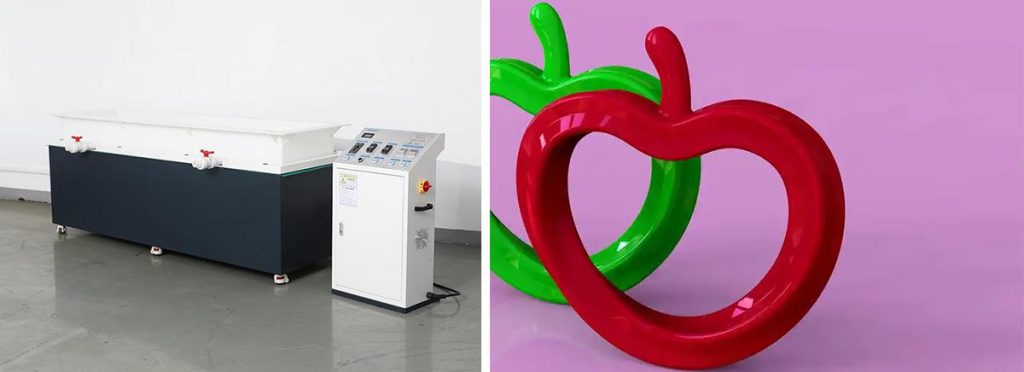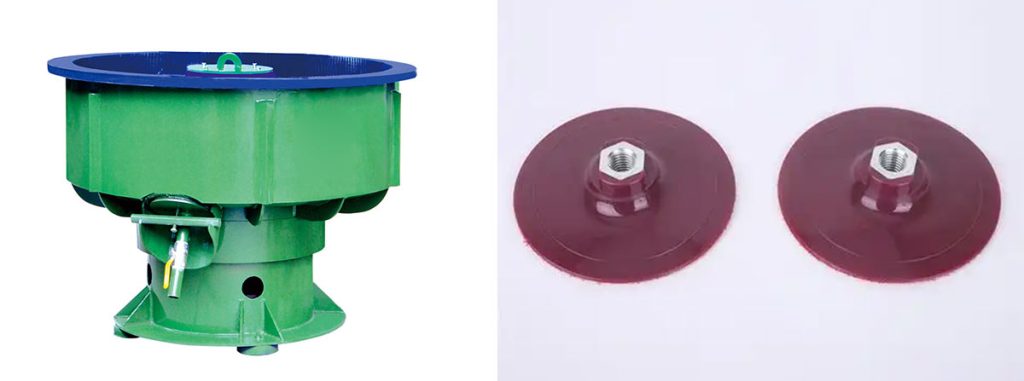

Buffing plastic plays a vital role in the production of sterile medical equipment. It ensures smooth surfaces, which reduce the risk of bacterial growth and improve the durability of the components. Proper cleaning during this process is essential to maintain sterility and meet healthcare standards. Using the right tools and techniques prevents contamination and ensures the equipment functions as intended. Cleaning tools, buffing machines, and workspaces before and after use further enhance sterility. This meticulous approach safeguards patient safety and supports compliance with medical regulations.
Key Takeaways
- Buffing plastic makes medical equipment smooth. This stops bacteria and makes it last longer.
- Using the correct tools and materials is important. Safe, medical-grade items meet healthcare rules.
- Keeping the area clean during buffing is key. Cleanrooms and sanitized tools stop germs and protect patients.
- Training on buffing methods and following rules prevents errors. This keeps medical devices working well.
- Writing down buffing steps and cleaning methods is needed. It helps track work and follow healthcare laws.
Tools and Materials for Buffing Plastic
Recommended Buffing Tools
Types of Buffing Wheels for Healthcare Applications
Buffing wheels play a critical role in achieving smooth surfaces on plastic components used in healthcare. Cotton and felt wheels are commonly used due to their gentle yet effective polishing capabilities. For more abrasive needs, sisal wheels can remove rough edges without compromising the integrity of the material. Each type of wheel must be compatible with healthcare standards to ensure sterility and prevent contamination during the buffing process.
Handheld Buffing Devices vs. Automated Systems
Handheld buffing devices offer precision and control, making them ideal for smaller or intricately shaped medical components. However, automated systems provide consistency and efficiency, especially for large-scale production in hospital-grade environments. Selecting the right tool depends on the size, shape, and volume of the equipment being polished. Both options require thorough cleaning before and after use to maintain sterility.
Buffing Compounds for Sterilization and Cleanability
Non-toxic and Medical-Grade Compounds
Using non-toxic, medical-grade buffing compounds ensures that the polished surfaces remain safe for patient care. These compounds must comply with healthcare regulations to minimize the risk of infection. Below is a table of recommended compounds for buffing plastic in medical applications:
| Buffing Compound | Description | Recommended Use |
|---|---|---|
| Red Tripoli Buffing Compound | Used for polishing rough edges like saw cuts. | Followed by White or Blue Rouge. |
| Buffing Compound Blue Rouge | Ideal for final buffing and preferred by plastic fabricators. | Use after Tripoli. |
| White Rouge Buffing Compound | Recommended for final polishing and contains no abrasives. | Final polishing. |
| Jewelers Red Rouge | Thicker and moister, good for plastics and often used by jewelry makers. | Suitable for plastics. |
Abrasive Levels for Different Plastic Types
Different plastics require varying abrasive levels to achieve optimal results. Softer plastics benefit from low-abrasive compounds like White Rouge, while harder plastics may need Red Tripoli for initial polishing. Choosing the correct abrasive level prevents over-buffing, which can damage the surface, and under-buffing, which may leave scratches.
Protective Equipment for Sterile Buffing
Gloves, Masks, and Eye Protection
Protective gear is essential for maintaining sterility and ensuring worker safety. Gloves prevent direct contact with the plastic, reducing contamination risks. Masks and eye protection shield workers from fine particles and buffing compound residues, which can pose health hazards during cleaning and disinfection.
Cleanroom-Compatible Gear
In healthcare settings, cleanroom-compatible gear ensures that the buffing process adheres to strict infection control protocols. Workers should wear gowns, caps, and shoe covers designed for cleanroom use. This minimizes environmental cleaning efforts and supports disinfection and sterilization practices, reducing the risk of infection for patients.
Sterility Considerations During Buffing
Maintaining a Sterile Environment
Setting Up a Cleanroom or Sterile Workspace
A cleanroom or sterile workspace is essential for maintaining sterility during the buffing process. This environment minimizes contamination risks by controlling air quality, temperature, and humidity. Workers should follow strict protocols to ensure the workspace meets hospital-grade standards. High-touch surfaces, such as workbenches and buffing machines, must undergo regular cleaning with hospital-grade disinfectants. Proper environmental cleaning reduces the risk of infection and ensures compliance with healthcare regulations.
Sanitizing Tools and Equipment
Sanitizing tools and equipment is a critical step in maintaining sterility. Workers should follow these steps for effective cleaning:
- Gather cleaning tools, including stiff-bristle brushes, scrapers, and mild detergents or solvents.
- Remove the buffing wheel from the machine and inspect it for wear or debris.
- Use compressed air to blow off dust and debris from the wheel’s surface.
- Soak the buffing wheel in warm water with detergent to remove embedded residues.
These steps ensure that tools remain free from contamination, supporting infection control efforts in healthcare environments.
Preventing Contamination During Buffing
Proper Handling of Plastic Components

Proper handling of plastic components reduces contamination risks. Workers should wear cleanroom-compatible gloves to avoid direct contact with materials. Buffing plastic components in a controlled environment ensures cleanability and prevents exposure to airborne particles. Following these practices safeguards the sterility of medical devices.
Avoiding Cross-Contamination
Cross-contamination can compromise the safety of medical equipment. Workers should clean tools between uses and avoid mixing buffing compounds for different materials. Using separate workstations for different tasks further minimizes contamination risks. These measures align with infection control protocols in healthcare settings.
Post-Buffing Sterilization and Packaging
Approved Sterilization Methods
Sterilization ensures that buffed medical devices are safe for patient care. Common methods include autoclaving, ethylene oxide gas, and gamma radiation. Each method must comply with healthcare guidance to maintain sterility. Workers should select the appropriate method based on the material and intended use of the equipment.
Packaging for Sterile Storage
Proper packaging protects buffed equipment from contamination during storage and transport. Best practices include:
- Ensuring the sterile barrier remains intact.
- Testing and validating packaging protocols for safety.
- Using robust secondary packaging to prevent damage.
- Avoiding practices that compromise shelf life.
These steps ensure that medical devices remain sterile and ready for use in hospital settings.
Common Mistakes to Avoid in Buffing Plastic
Using Incorrect Tools or Compounds
Overly Abrasive Materials
Using abrasive materials that are too harsh can damage the surface of plastic components. This mistake often leads to scratches, uneven finishes, or weakened structural integrity. Workers should select buffing wheels and compounds that match the specific type of plastic being polished. For example, softer plastics require gentler materials to avoid over-polishing. Regular inspections of the buffing machine and tools help ensure compatibility with healthcare standards.
Non-Medical-Grade Buffing Compounds
Non-medical-grade compounds introduce contaminants that compromise sterility. These compounds may leave residues that interfere with disinfection and sterilization processes. Workers should always use medical-grade compounds approved for healthcare applications. Following guidance from manufacturers ensures that the polished surfaces meet cleanability and infection control requirements.
Neglecting Sterility Protocols
Buffing in Non-Sterile Environments
Performing buffing tasks outside a sterile workspace increases the risk of contamination. Dust, airborne particles, and unclean surfaces can compromise the sterility of medical devices. Workers should always buff plastic components in hospital-grade environments, such as cleanrooms, to maintain sterility. Environmental cleaning with hospital-grade disinfectants ensures that the workspace remains free of contaminants.
Improper Cleaning of Tools
Failing to clean tools thoroughly after each use can lead to cross-contamination. Buffing wheels, brushes, and other equipment must undergo regular cleaning to remove residues and debris. Workers should follow strict cleaning protocols, including soaking tools in approved solutions and drying them completely before reuse. Proper cleaning practices reduce the risk of infection and ensure compliance with healthcare standards.
Over-Buffing or Under-Buffing
Damaging the Plastic Surface
Over-buffing occurs when workers apply excessive pressure or polish for too long. This mistake can warp or weaken the plastic, rendering the equipment unsuitable for patient care. Monitoring the buffing process and using appropriate tools prevents this issue. Workers should also avoid using a buffing machine at excessively high speeds, which can generate heat and damage the material.
Leaving Scratches or Residue
Under-buffing leaves visible scratches or residues that compromise the cleanability of medical devices. These imperfections create surfaces where bacteria can thrive, increasing the risk of infection. Workers should ensure that all surfaces are polished to a smooth finish. Using the correct buffing compounds and inspecting the final product helps achieve the desired results.
Tip: Regular training for staff on proper buffing techniques and tool maintenance can prevent these common mistakes. Adhering to healthcare guidelines ensures that medical equipment remains safe and effective for patients.
Compliance with Guidelines for Cleanability and Sterilization
Relevant Industry Standards
ISO Standards for Medical Equipment
ISO standards play a crucial role in ensuring the cleanability and sterilization of medical equipment. ISO 17664 provides essential guidance on cleaning, disinfection, drying, and packaging processes. This standard ensures that medical devices meet safety requirements for patient care. ISO 15883 focuses on washer-disinfectors used for reusable medical devices. It includes:
- ISO 15883-1, which outlines general requirements for cleaning and disinfection.
- ISO 15883-2, which specifies thermal disinfection for surgical instruments.
- ISO 15883-5, which provides performance requirements and test methods for cleaning efficacy.
These standards help maintain sterility and support infection control in healthcare environments.
FDA Guidelines for Sterile Devices
The FDA provides detailed guidance for ensuring the sterility of medical devices. These guidelines emphasize the importance of using sterilization pouches and hospital-grade cleaning methods. They also require manufacturers to validate disinfection and sterilization processes. Adhering to these guidelines ensures that equipment remains safe for patients and complies with healthcare regulations.
Documentation and Record-Keeping
Tracking Buffing Processes
Accurate documentation of buffing processes is essential for maintaining sterility. Workers should record details such as the type of buffing machine used, cleaning protocols, and sterilization methods. This information ensures traceability and supports compliance with healthcare standards.
Ensuring Traceability of Materials
Traceability is critical in the health care environment. Workers should label sterilization pouches with batch numbers and dates. This practice allows hospitals to track materials and verify their safety. Proper record-keeping minimizes risks and ensures that equipment meets infection control requirements.
Quality Assurance Practices
Regular Inspections and Testing

Routine inspections and testing ensure that buffing machines and buffing tools meet hospital-grade standards. Workers should check for wear and tear on equipment and verify the effectiveness of cleaning protocols. Regular testing of sterilization pouches ensures they maintain a sterile barrier. These practices support infection control and enhance patient safety.
Training Staff on Compliance Protocols
Training staff on cleaning, disinfection, and sterilization protocols is vital. Workers should learn how to handle equipment, use sterilization pouches, and follow ISO and FDA guidelines for cleanability. Ongoing education ensures that staff remain updated on best practices, reducing the risk of contamination.
Tip: Hospitals should establish a quality assurance program to monitor compliance with guidelines for cleanability and sterilization. This program helps maintain sterility and ensures the safety of medical devices.
Conclusion
Proper buffing techniques, tools, and materials play a vital role in ensuring the sterility and functionality of medical equipment. Buffing plastic used in medical devices is particularly critical, as smooth and defect-free surfaces enhance both performance and cleanability. Effective cleaning and disinfection during the buffing process reduce risks associated with contamination. Healthcare professionals must prioritize hospital-grade environments and follow strict protocols to maintain patient care standards. Adhering to healthcare guidelines for cleanability, disinfection, and sterilization ensures optimal results. Compliance with these standards supports infection control and enhances the safety of high-touch surfaces and equipment used in hospitals. This meticulous approach safeguards patients and upholds the integrity of medical devices.
